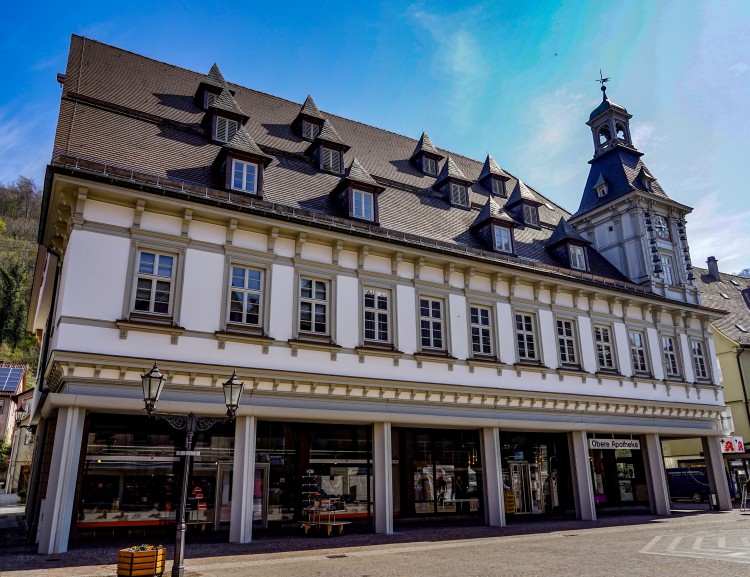|
Helfensteiner
Helfensteiner is a dark-skinned German wine grape crossing of the species ''Vitis vinifera'', that was created in 1931 with the crossing of Frühburgunder (Pinot Précoce noir) and Trollinger (Schiava Grossa). It was created by August Herold at the grape breeding institute in Weinsberg in the Württemberg region.Vitis International Variety Catalogue: Helfensteiner , accessed on October 12, 2009 J. Robinson ''Jancis Robinson's Wine Course'' Third Edition pg 140 Abbeville Press 2003 The name of the variety is derived from that of the castle ruin Helfenstein close to |
Dornfelder
Dornfelder is a dark-skinned variety of grape of German origin used for red wine.German Wine Institute: Dornfelder , accessed on May 29, 2008 It was created by August Herold (1902–1973) at the grape breeding institute in in the region in 1955. Herold crossed the grape varieties [...More Info...] [...Related Items...] OR: [Wikipedia] [Google] [Baidu] |
Heroldrebe
Heroldrebe is a red German wine grape variety produced by crossing Blauer Portugieser and Lemberger. It was created by August Herold at the grape breeding institute in Weinsberg in the Württemberg region in 1929, and was named after him. One of Heroldrebe's drawbacks is its relatively late ripening; it is harvested at about the same time as Pinot noir. Heroldrebe was grown on a total of in Germany in 2008, with a decreasing trend. There were in Palatinate, in Rheinhessen, and in Württemberg. In Palatinate it is typically used to produce light, almost pinkish, colored wines. J. Robinson ''Jancis Robinson's Wine Course'' Third Edition pg 140 Abbeville Press 2003 Synonyms The only synonyms of Heroldrebe is its breeding code We S 130 or Weinsberg S 130. Offspring Heroldrebe was later crossed with Helfensteiner by Herold to produce Dornfelder Dornfelder is a dark-skinned variety of grape of German origin used for red wine. [...More Info...] [...Related Items...] OR: [Wikipedia] [Google] [Baidu] |
August Herold
August Karl Herold (August 7, 1902 in Neckarsulm – January 8, 1973 in Neckarsulm) was a German grape breeder. Herold graduated from the Agricultural College Hohenheim in 1925, worked at a grape breeding station in Naumburg 1926–1928 and in 1928 became the head of a grape breeding station in Weinsberg, which during his early years was called ''Württembergischen Anstalt für Rebenzüchtung und Rebenpfropfung'' and from 1947 Staatliche Lehr- und Versuchsanstalt für Wein- und Obstbau Weinsberg (LVWO). During the years 1941–1948 Herold was first called up for military service during World War II and then ended up as a prisoner of war of the Soviet Union. After coming home in 1948, he resumed his duties in Weinsberg and stayed on this post until retirement at the end of 1964.LVWO Weinsberg: Biografie [...More Info...] [...Related Items...] OR: [Wikipedia] [Google] [Baidu] |
German Wine
German wine is primarily produced in the west of Germany, along the river Rhine and its tributaries, with the oldest plantations going back to the Ancient Rome, Roman era. Approximately 60 percent of German wine is produced in the state of Rhineland-Palatinate, where 6 of the 13 regions (''Anbaugebiete'') for quality wine are situated. Germany has about 103,000 hectares (252,000 acres or 1,030 square kilometers) of vineyard, which is around one tenth of the vineyard surface in Spain, France or Italy. The total wine production is usually around 10 million hectoliters annually, corresponding to 1.3 billion bottles, which places Germany as the eighth-largest wine-producing country in the world. White wine accounts for almost two thirds of the total production. As a wine country, Germany has a mixed reputation internationally, with some consumers on the export markets associating Germany with the world's most elegant and aromatically pure white wines while other see the country mainl ... [...More Info...] [...Related Items...] OR: [Wikipedia] [Google] [Baidu] |
Grape (wine)
This list of grape varieties includes cultivated grapes, whether used for wine, or eating as a table grape, fresh or dried (raisin, currant, sultana). For a complete list of all grape species including those unimportant to agriculture, see Vitis. The term ''grape variety'' refers to cultivars rather than actual botanical varieties according to the International Code of Nomenclature for Cultivated Plants, because they are propagated by cuttings and may have unstable reproductive properties. However, the term ''variety'' has become so entrenched in viticulture that any change to using the term ''cultivar'' instead is unlikely. Single species grapes While some of the grapes in this list are hybrids, they are hybridized within a single species. For those grapes hybridized across species, known as interspecific hybrids, see the section on multispecies hybrid grapes below. ''Vitis vinifera'' (wine) Red grapes White grapes Rose Grapes ''Vitis vinifera'' (table) ... [...More Info...] [...Related Items...] OR: [Wikipedia] [Google] [Baidu] |
Württemberg (wine Region)
Württemberg is a region (''Anbaugebiet'') for quality wine in Germany,Wein.de (German Agricultural Society): Wuerttemberg read on January 1, 2008 and is located in the historical region of in southwestern , which today forms part of the federal state of . Under German wine legislation, Württemberg and |
Statistisches Bundesamt
The Federal Statistical Office (german: Statistisches Bundesamt, shortened ''Destatis'') is a federal authority of Germany. It reports to the Federal Ministry of the Interior. The Office is responsible for collecting, processing, presenting and analysing statistical information concerning the topics economy, society and environment. The purpose is providing objective, independent and highly qualitative statistical information for the whole public. About 2300 staff members are employed in the departments in Wiesbaden, Bonn and Berlin. The department in Wiesbaden is the main office and runs the largest library specialised in statistical literature in Germany. It is also the Office of the President who is also by tradition, but not by virtue of the office, the Federal Returning Officer. In this position, they are the supervisor of the elections of the German Parliament (" Bundestag") and of the European Parliament. The Berlin Information Point is the service centre of the Fed ... [...More Info...] [...Related Items...] OR: [Wikipedia] [Google] [Baidu] |
Geislingen An Der Steige
Geislingen an der Steige is surrounded by the heights of the Swabian Alb and embedded in 5 beautiful valleys. It is a town in the district of Göppingen in Baden-Württemberg in southern Germany. The name relates to its location "on the climb" (''an der steige'') of a trade route over the Swabian Jura mountain range. It is in the southeast of the Stuttgart region about 50 km of Stuttgart and 27 km of Ulm. It is the second largest city in the district of Göppingen. The city is characterized by a grown industry and attractive surroundings of the Swabian Albtrauf adventure region - this creates a positive environment for regionally and internationally oriented companies. Geislingen's economic significance lies above all in the steel and metal goods processing and automotive supply sectors. Geislingen is also a city of students. The University of Applied Sciences for Economy and Environment is known far beyond the borders with best rankings.A medieval town with alemann ... [...More Info...] [...Related Items...] OR: [Wikipedia] [Google] [Baidu] |
Ruine Helfenstein
Helfenstein Castle represents the remnants of the fortified castle (''burg'') Helfenstein of the counts of Helfenstein located above the city of Geislingen an der Steige, Baden-Württemberg, Germany. It was destroyed in 1552. See also *List of castles in Baden-Württemberg Numerous castles can be found in the German state of Baden-Württemberg. These buildings, some of which have a history of over 1000 years, were the setting of historical events, domains of famous personalities and are still imposing buildings to ... * House of Helfenstein References External links * Ruine Helfenstein on Bergen Inventar.de Ruined castles in Germany Hill castles Swabian Jura {{BadenWürttemberg-struct-stub ... [...More Info...] [...Related Items...] OR: [Wikipedia] [Google] [Baidu] |
Vitis Vinifera
''Vitis vinifera'', the common grape vine, is a species of flowering plant, native to the Mediterranean region, Central Europe, and southwestern Asia, from Morocco and Portugal north to southern Germany and east to northern Iran. There are currently between 5,000 and 10,000 varieties of ''Vitis vinifera'' grapes though only a few are of commercial significance for wine and table grape production. The wild grape is often classified as ''Vitis vinifera'' ''sylvestris'' (in some classifications considered ''Vitis sylvestris''), with ''Vitis vinifera'' ''vinifera'' restricted to cultivated forms. Domesticated vines have hermaphrodite flowers, but ''sylvestris'' is dioecious ( male and female flowers on separate plants) and pollination is required for fruit to develop. Grapes can be eaten fresh or dried to produce raisins, sultanas, and currants. Grape leaves are used in the cuisine of many cultures. The fresh grapes can also be processed into juice that is fermented to make ... [...More Info...] [...Related Items...] OR: [Wikipedia] [Google] [Baidu] |
Weinsberg
Weinsberg (South Franconian: ''Weischberg'') is a town in the north of the state of Baden-Württemberg in Germany. It was founded around 1200 and is situated in the Heilbronn district. The town has about 11,800 inhabitants. It is noted for its wine. Geography Geographical position Weinsberg lies in the eastern Heilbronn district in the northeast part of Baden-Wuerttemberg, between the Neckar in the west and the Löwenstein mountains in the east. The small river Sulm rises from the Löwenstein mountains and flows into the Neckar after approximately . The valley formed of the Sulm and its tributaries is called ''Weinsberger Tal''. The city mainly lies in and on the tendencies of the valley of the Stadtseebach (also called Saubach), a southern tributary of the Sulm. The Sulm flows by Weinsberg's area, but not by the city itself, and only a small northern part of the city lies at the edge of the Sulm valley. Northwest of the town centre rises the Burgberg, with the ruins of '' Weiber ... [...More Info...] [...Related Items...] OR: [Wikipedia] [Google] [Baidu] |
Synonyms
A synonym is a word, morpheme, or phrase that means exactly or nearly the same as another word, morpheme, or phrase in a given language. For example, in the English language, the words ''begin'', ''start'', ''commence'', and ''initiate'' are all synonyms of one another: they are ''synonymous''. The standard test for synonymy is substitution: one form can be replaced by another in a sentence without changing its meaning. Words are considered synonymous in only one particular sense: for example, ''long'' and ''extended'' in the context ''long time'' or ''extended time'' are synonymous, but ''long'' cannot be used in the phrase ''extended family''. Synonyms with exactly the same meaning share a seme or denotational sememe, whereas those with inexactly similar meanings share a broader denotational or connotational sememe and thus overlap within a semantic field. The former are sometimes called cognitive synonyms and the latter, near-synonyms, plesionyms or poecilonyms. Lexico ... [...More Info...] [...Related Items...] OR: [Wikipedia] [Google] [Baidu] |








